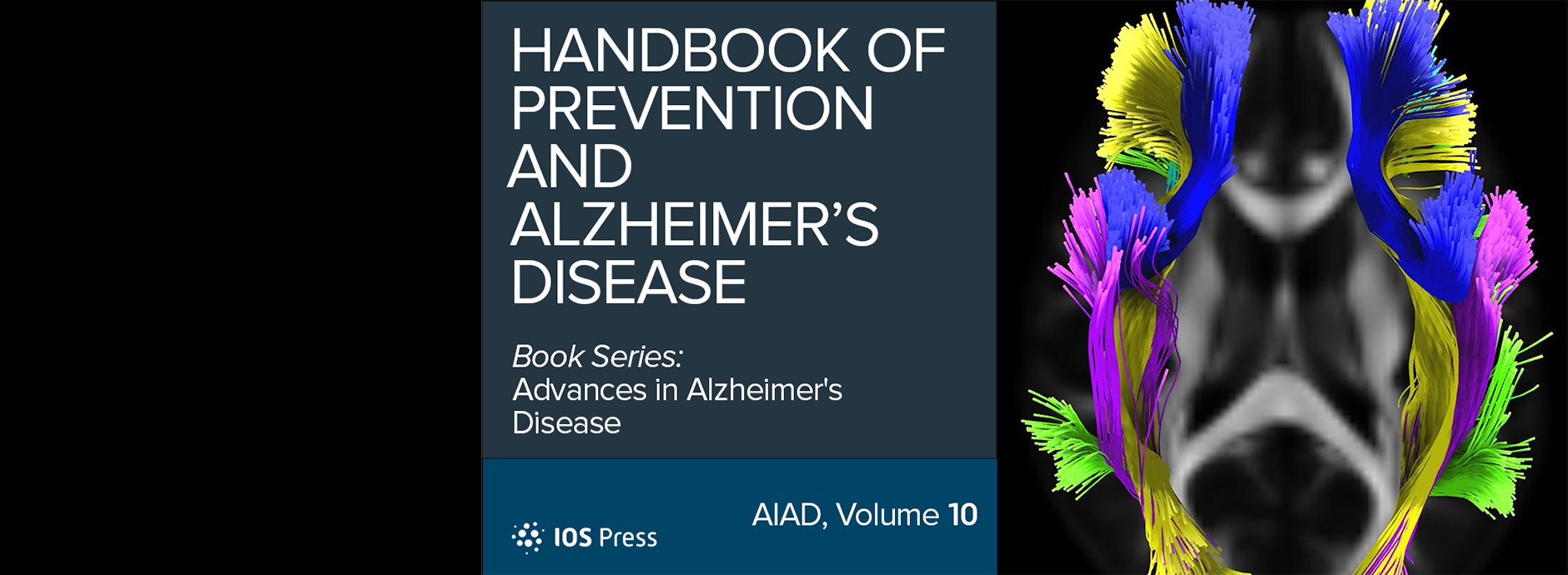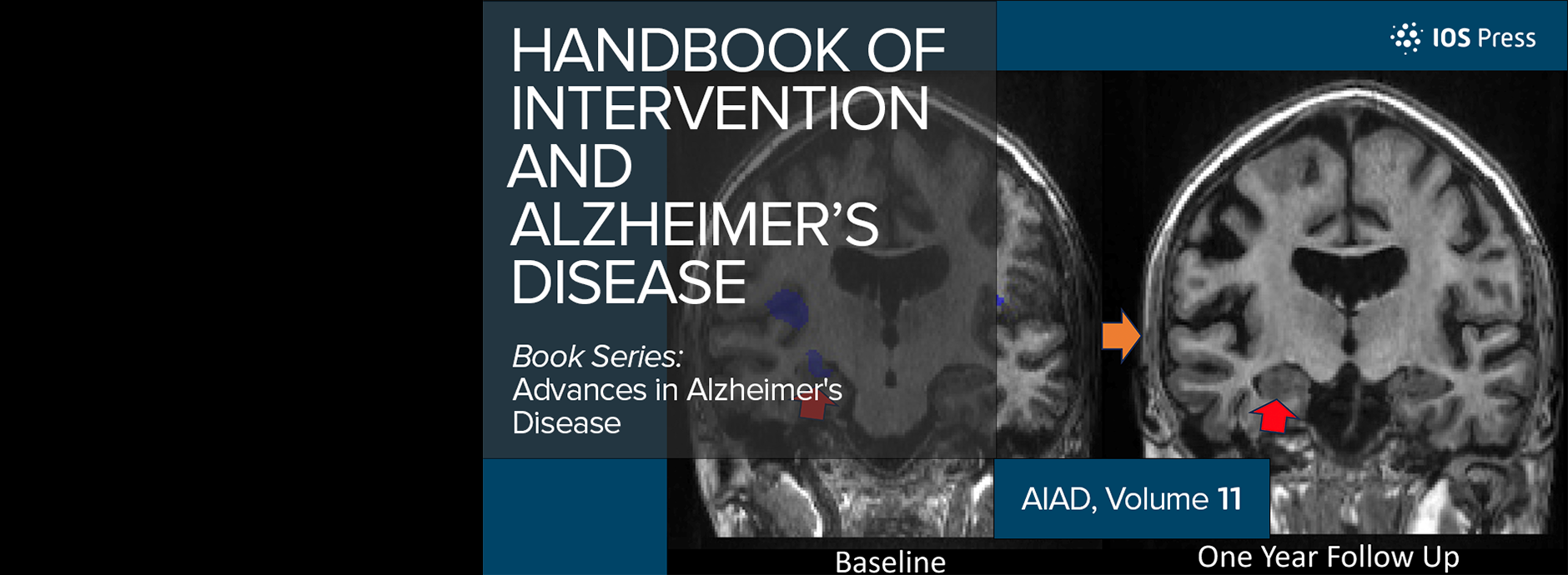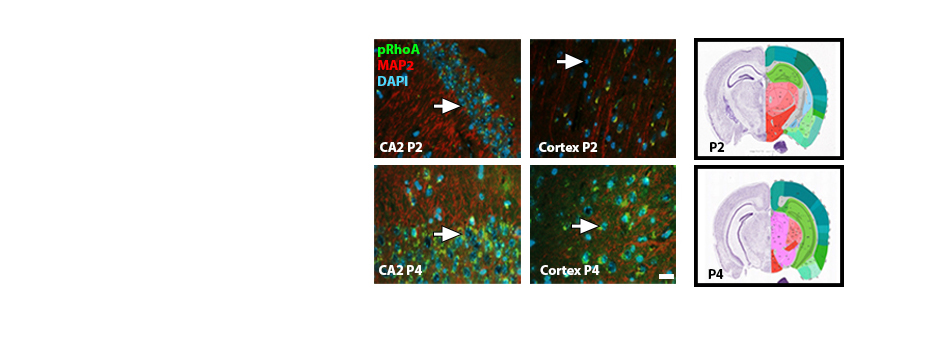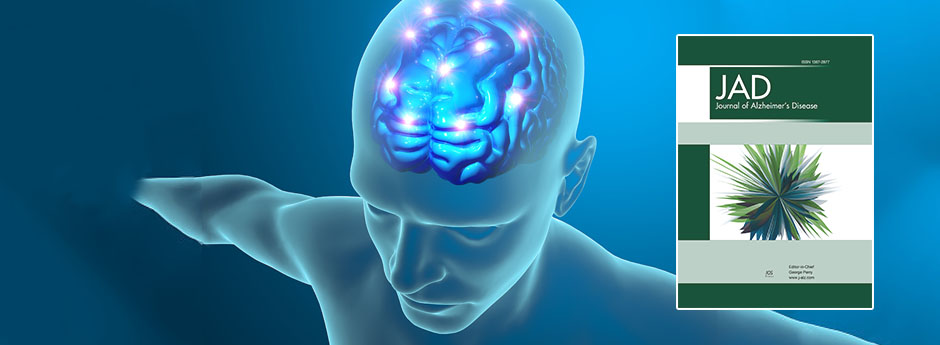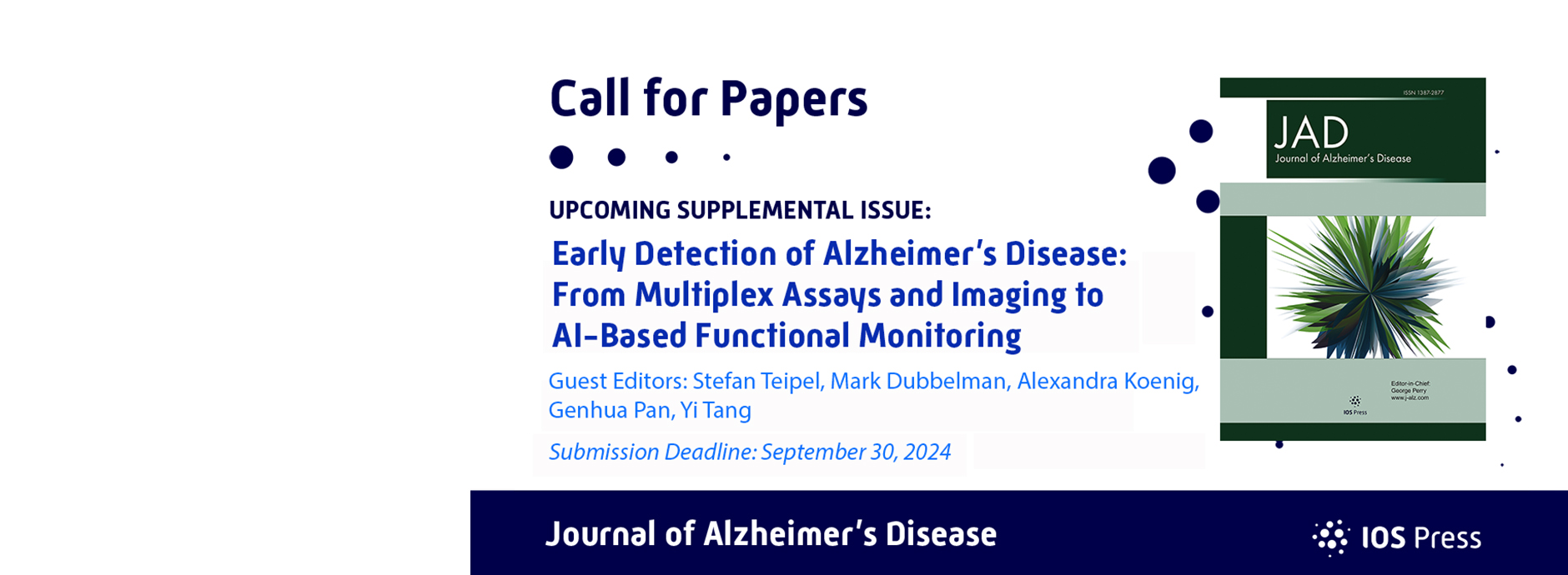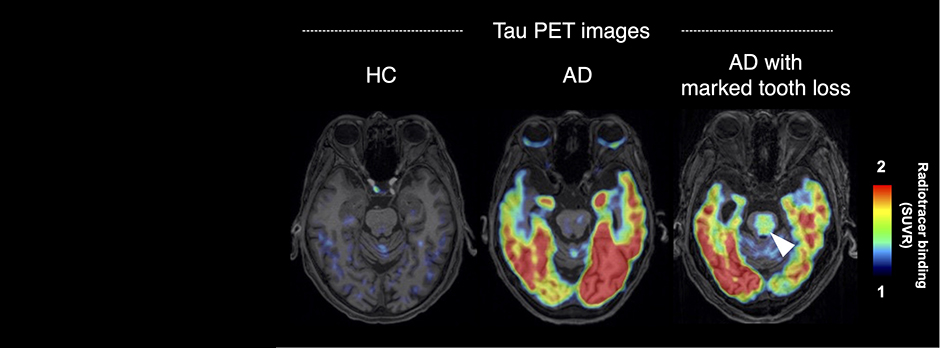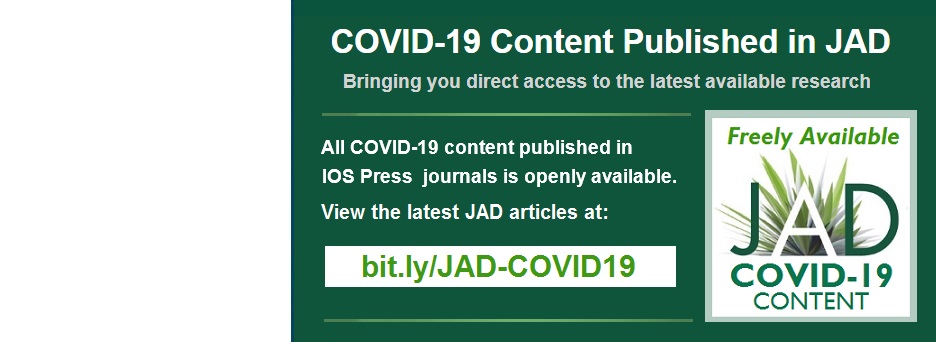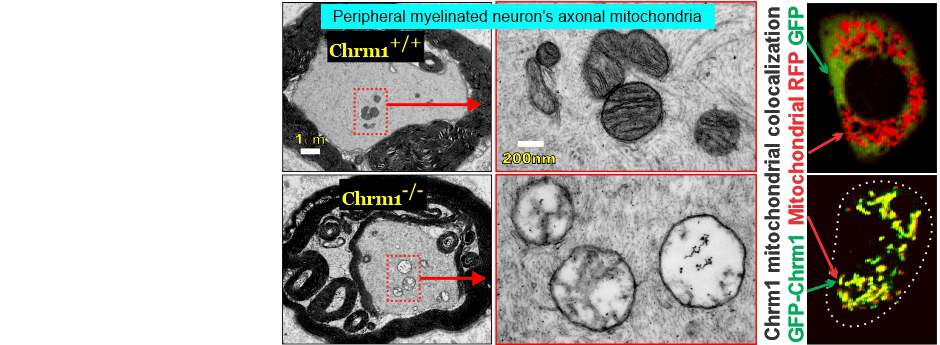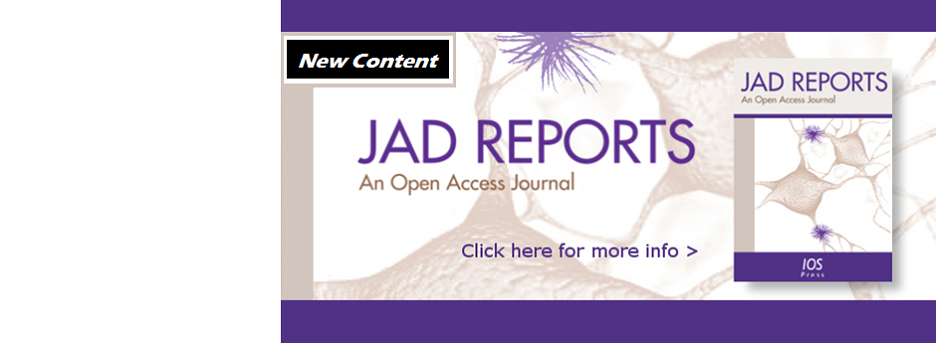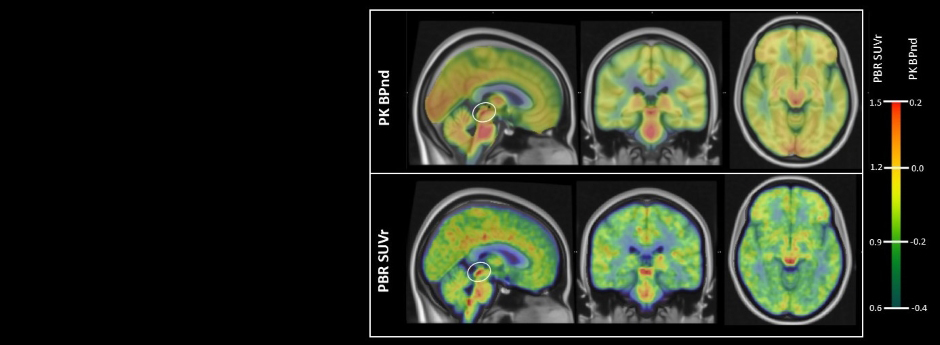Edited by C.A. Raji, Y. Leng, J.W. Ashford, and D.S. Khalsa, this book (AIAD, Vol. 10) introduces physicians, scientists, and other stakeholders to this subfield of AD research.
Edited by C.A. Raji, Y. Leng, J.W. Ashford, and D.S. Khalsa, this book (AIAD, Vol. 11) is a comprehensive overview of strategies for tackling Alzheimer’s disease and will be of interest to all those working in the field.
The expression of pRhoA at S188 in the hippocampus and cortex is dependent on the stereotactic plane. pRhoA expression decreased in the rostral regions (Plane 2) but increased in the caudal regions corresponding to Plane 4. From Nik Akhtar and Lu, JAD 95(4).
is an international multidisciplinary journal to facilitate progress in understanding the etiology, pathogenesis, epidemiology, genetics, behavior, treatment and psychology of Alzheimer's disease.
Exploring the association between posttraumatic stress disorder, traumatic brain injury, and vulnerability to Alzheimer's disease. Manual tractography was applied in male veterans to investigate the white matter microstructure of three fiber tracts. From Marcolini et al., JAD95(4).
Upcoming Supplemental Issue: Early Detection of Alzheimer’s Disease (Guest Editors: Stefan Teipel, Mark Dubbelman, Alexandra König, Genhua Pan, Yi Tang). Click the visual for details in the Calls for Papers (PDF) (opens in a new tab). Submission deadline: September 30, 2024
Patients with AD were divided into two groups based on a 130 g/day net carbohydrate (nCHO) cutoff. Results comparing lower-higher nCHO groups suggest that restricting carbohydrates may reduce atrophy in sensorimotor and visual cortex. From Bramen et al., JAD96(1).
New Co-Editor-in-Chief Appointed:
Paula I. Moreira, PhD, is an Associate Professor of Physiology and leads the Mitochondria in Brain Disorders research group at the Center for Neuroscience and Cell Biology at the University of Coimbra.
Tau PET tracer retention quantified as standardized uptake ratio (SUVR) was elevated in the limbic and neocortical areas of AD patients and was further increased in the pons, including the locus coeruleus, of the patients with marked tooth loss (arrowhead). From Matsumoto et al., JAD96(3).
COVID-19 content in JAD is openly available. Read all content including the editorial by JAD's Editor-in-Chief George Perry, in which he calls out for careful study to determine the numbers of AD patients infected and dying of COVID-19, via: bit.ly/JAD-COVID19
Cholinergic Receptor Muscarinic 1 (Chrm1) colocalizes and comigrates with mitochondria in cultured sensory neurons. Chrm1 deleted mice exhibit mitochondrial defects in sensory neurons, potentially associated with peripheral sensory loss in Alzheimer's. From Sabbir, JAD 98(1).
JAD Reports is our fully open access international, multidisciplinary journal dedicated to providing an open forum for original research that will expedite our fundamental understanding of Alzheimer's disease. View new content
In healthy subjects, TSPO PET – considered to reflect activated microglia – shows high signal in brainstem, particularly in inferior colliculi (IC; circled). In AD, IC TSPO is abnormally low. Understudied brainstem microglia may play a unique role in AD. Butler et al., JAD99(1).


